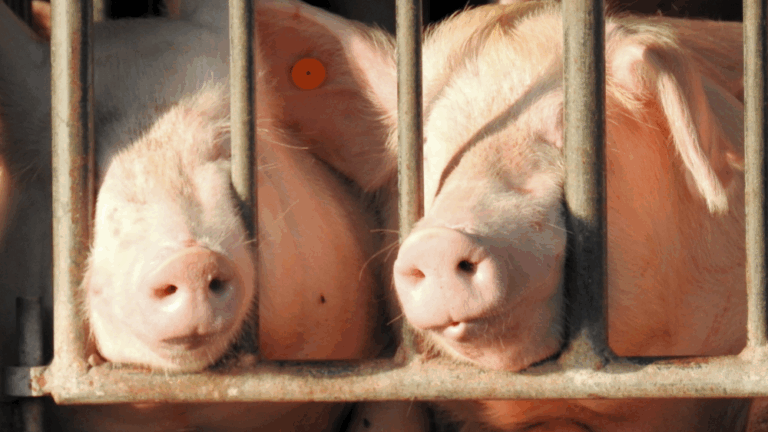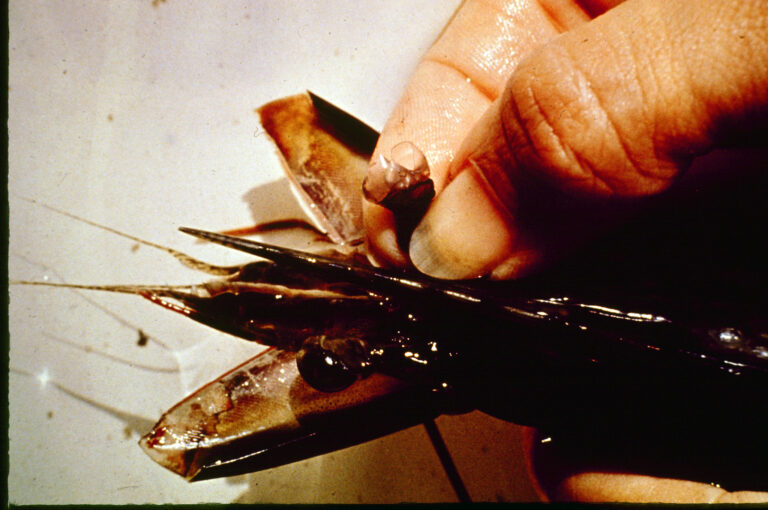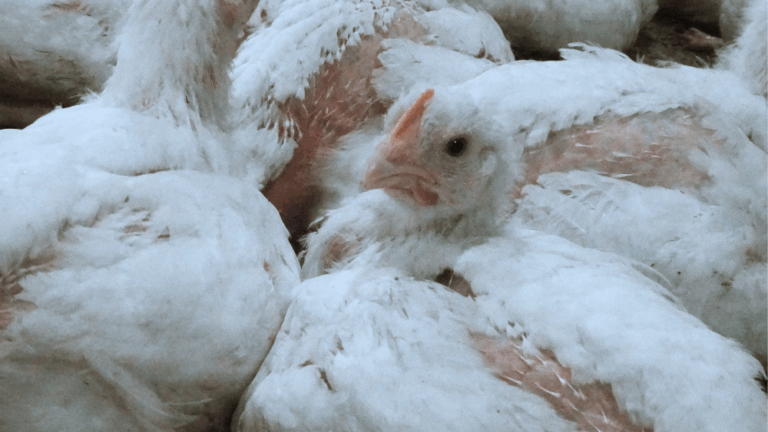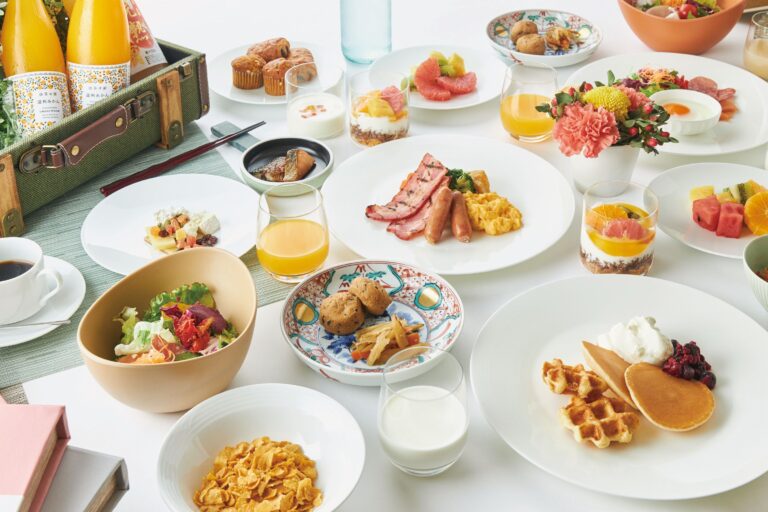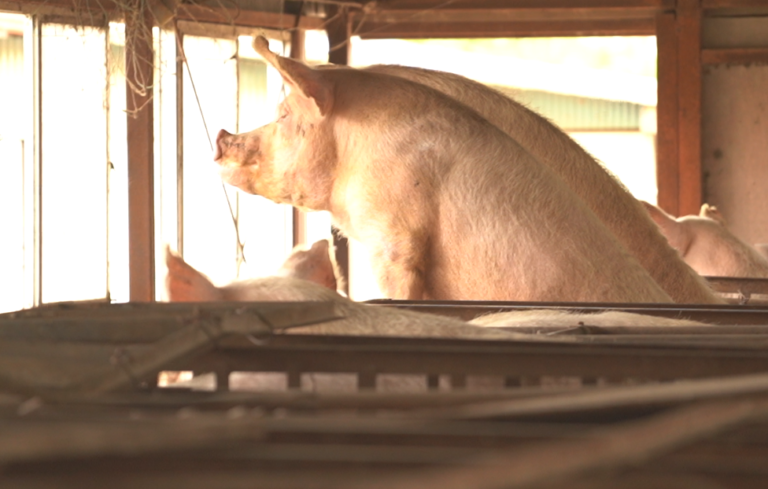The Tokyo Olympics and Paralympics are expected to begin in July 2021 after a one-year postponement. As the Tokyo Games will be held during the COVID-19 pandemic, all participants must take additional precautions to protect their health. This goes beyond just disinfecting; it is also important to raise immunity, avoid crowding, and stay away from related risks. Diet, specifically the ingredients in food, play a crucial role in raising immunity among the atheletes.
The standards for procuring livestock products for the Tokyo Games were established in 2017. Animal welfare levels are minimal in comparison to world standards. For example, at the London Games, free-range eggs were the minimum standard. At the Rio Games, only eggs from local and cage-free chickens were permitted. However, at the Tokyo Games, battery cage eggs will be allowed, as the Organizing committee concluded that they were acceptable.
ARCJ has advocated for improved animal welfare standards at the Tokyo Games since 2016. Both domestic and foreign organizations supported a petition campaign in 2017. ARCJ, in collaboration with the Human League Japan (THLJ) and Open Wing Alliance (OWA), also shared the demands of former Olympic athletes with the Tokyo Metropolitan Government and the Organizing Committee. Although ARCJ has discussed this issue with the Organizing Committee, the Tokyo Metropolitan Government, and the Cabinet Secretariat, the responses were disappointing.
As it stands, battery cage eggs, pork from gestation crate facilities, and chickens raised in overcrowded environments will be offered in the Athletes Village at the Tokyo Games.
During the year-long postponement of the Tokyo Games, how behind Japan’s livestock industry is have become apparent. Media have reported on the opinions of former Olympic athletes on procurement standards, raising public awareness that they fail to meet international criteria. Recently, the deplorable conditions on a farm certified by the Japan Good Agricultural Practice (JGAP) – the procurement standard of the Tokyo Olympic Games—were exposed by an organization overseas. The procurement standards’ claim to protect animal welfare was exposed as empty words.
In recent years, cage-free egg distribution in the US has risen by 5.8%. Thailand has begun national cage-free certification. The share of cage-free eggs in the EU is now 52.2%. Confined breeding of pigs (or gestation crate breeding) is largely abolished in Europe and Thailand. Major livestock companies, including those in China, have taken urgent measures to stop confined breeding, with some companies already eliminating the practice.
ARCJ submitted the letter below to the Tokyo Organizing Committee, and the Cabinet Office, outlining a request not to use eggs from cages, pork from confinement, and livestock products from overcrowded breeding at the Tokyo Olympics and Paralympics. This would be ARCJ’s final recommendations.
The significance of the Tokyo Games, to be held during the COVID-19 pandemic, is being strongly questioned around the world. Under such circumstances, and in the interest of leaving a positive globally-recognized legacy, the event should be sustainably managed. We sincerely hope that the Tokyo Games will be an opportunity to improve animal welfare.
Dear Tokyo Organizing Committee for the Olympic and Paralympic Games
2021/6/16
Request to not use eggs from cages, pork from confined breeding, and livestock products from overcrowded breeding as food at the Tokyo Olympics and Paralympics.
We are a certified non-profit organization (NPO) that works to improve animal welfare of farmed animals.
Since 2017, we have urged the Tokyo Olympics and Paralympics to consider animal welfare in the procurement of livestock products, but unfortunately, the voices of citizens and former Olympic athletes have not been reflected in the procurement policy. As a result, the procurement policy for livestock products fails to meet the international standards for animal welfare.
Due to the influence of the COVID-19 pandemic, the Tokyo Games have been postponed and the audience is expected to be small, reducing the number of meals provided. With less quantity of food required than originally expected, this is an opportunity to improve the quality of food.
The quality of ingredients is very important for athletes and may affect their performance.
COVID-19 has also changed people’s awareness about animal-based foods. Many new zoonotic diseases and drug-resistant bacteria have originated from farmed animals. Rearing environments that ensure animal welfare — not crowded, with natural light, and allowing for natural behaviors — also improve immunity, allowing animals to prevent diseases themselves. Animal welfare has become even more important in the last few years, with rapid movements worldwide toward animal welfare improvement.
Please add the following sentence to the sustainable livestock procurement standards created by the committee so that Japan’s animal agriculture will not be left behind.
Please add the following sentence as ⑤ of the Livestock Products Procurement Standard in Consideration of Sustainability 2.
“⑤ To achieve high animal welfare, measures must be taken to prevent cage rearing, confined breeding*, and overcrowding during the production process. *For pigs, excluding one week before and four weeks after giving birth”
Rationales are indicated below.
Reasons to avoid cage rearing
* Food products affected
While cage rearing mainly affects the production of eggs (chicken, quail, and ducks), some chickens for meat are also caged. As there is almost no cage breeding of chicken, the impact on procurement will be minimal.
- A meta-analysis of data on 176 million hens from 6,040 commercial poultry herds in 16 countries showed that battery cages have the highest mortality rates. Outbreaks of salmonella have also been found to be more frequent in caged rearing than in cage-free or free-range rearing.
- In the EU, as of 2020, 52% of the eggs in circulation were eggs from cage-free rearing, including free-range. Eggs from cage-rearing make up less than half of all eggs. In particular, eggs from battery cages, allowed by the procurement standards, are illegal in the EU.
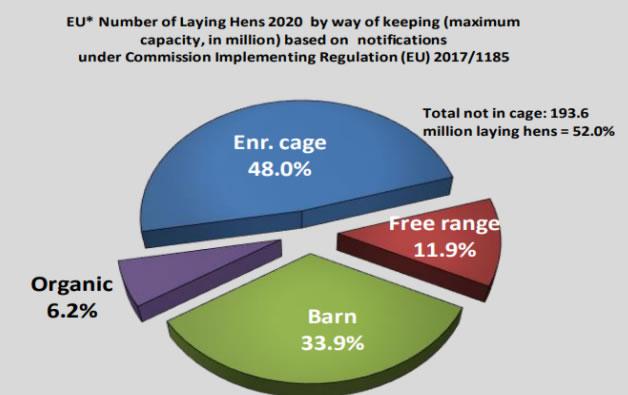
https://ec.europa.eu/info/sites/default/files/food-farming-fisheries/farming/documents/eggs-dashboard_en.pdf
In addition, the EU Parliament decided in June 2021 to abolish cage rearing and requested that the European Commission enact a ban on cage rearing. This will soon result in zero cage rearing in the EU.
- In the US, the percentage of cage-free eggs, which was 5.8% in 2012, increased to 29.3% in March 2021. Due to cage-free commitments of many corporation, it is estimated that 66% of eggs will be cage-free by the end of 2025. This is not about a distant future, but four years from now, and we can see that about five years before and after the Tokyo Games is a period of great change.
Also, more stringent regulations than the EU are spreading. Massachusetts and California have decided to ban cage-rearing and selling of cage-reared eggs, which will be enforced from 2022. Washington, Oregon, and Nevada will enforce similar regulations from 2024, and Michigan and Colorado from 2025. The decision to promote cage-free rearing in these regions with large numbers of consumers means production will increasingly shift to cage-free.
- In Thailand, the Thai government formulated cage-free certification in 2020, and major companies have already obtained the certification. This certification stipulates animal welfare standards that satisfy the five freedoms such as enrichment, as well as cage-free rearing.
- In South Korea, in 2017, the Minister of Agriculture promoted animal welfare by “providing incentives to expand free range farms”. In 2018, the Ministry of Agriculture, Food, and Rural Affairs (MAFRA) increased chicken rearing density up to 750㎠/bird. In 2018, the egg company Pulmuone, which accounts for 12% of egg distribution, announced that it will switch to cage-free by 2028.
- The transition to cage-free is taking place around the world, with 3,000 companies committing to stop cage-reared eggs. There is no doubt that the world will never return to cage rearing.
- There is no need to explain the London and Rio Games requiring eggs to be cage-free.
Although the procurement standards for the Paris Games have not yet been finalized, there is no doubt they will be cage-free, as 45.9% of eggs in France were cage-free in 2020. Caged eggs cannot be sold in California from 2022, so the Los Angeles Games will undoubtedly procure cage-free eggs. - The supply of cage-free eggs in Japan was sufficient. Although procurement will not be easy as it is already 1 month away, it is worth trying.
At the Environment Committee meeting on February 25, 2021, the Minister of the Environment Koizumi said, “Battery cage has a problem that it cannot satisfy the behavioral desires that chickens originally have, such as perching on a perch or poking the ground. I don’t think this kind of rearing is recommended from the viewpoint of animal welfare”. No matter how the Ministry of Agriculture, Forestry, and Fisheries (MAFF) tries to detract from the truth, the scientific evidence backing the cage-free movement cannot be changed.
Reasons to avoid confined rearing
* Food products affected
Pork and milk involve confined rearing in the production process, including the use of sow gestation crates and farrowing stalls, dairy cow tethering, and beef cattle tethering. However, pig farms that do not use farrowing stalls are excluded from our request because the supply is currently insufficient in Japan.
- Gestation crates are being abolished all over the world.
| Meat producer ranking | Efforts to abolish gestation crates |
| No 1. JBS (Brazil) | 65% abolished. In 2015, the pig farming division Seara in the group announced that it would switch from gestation crates to group breeding. Including in its supply chain, promised to switch to group rearing by 2025. |
| No 2. Tyson Foods (USA) | While less than 10% of pig farms are owned by the company, as of December 2018, abolished for 53% of sows. When independent farmers are included, 21% abolished. |
| No 3. Manshu International WH Group (China) | 100% abolished by the end of 2017 in Smithfield, a wholly owned subsidiary. |
| No 4. CP Foods (Thailand) | Announced a plan to transition from gestation crates to group breeding. Transition by 2025 in Thailand and by 2028 overseas. As of 2019, 41% abolished in Thailand and 28% abolished overseas. |
| No 5. Nippon Ham (Japan) | Two farms of the company use free stalls, and all new ones will use free stalls. |
| No 6 Danish Crown (Denmark) | Abolished throughout the entire supply chain. |
| No 7. Hormel Foods (USA) | Abolished gestation crates in the company pig farms. |
| No 8. BRF (Brazil) | Goal to abolish by 2026. 29% accomplished in 2016-2019; 35% or more as of the end of 2019; expected to be 100% abolished in 2022. |
- In addition, major pork producers, including in China, Thailand, and Brazil, are eliminating confined breeding.
- The EU banned the use of gestation crates in 2013 (excluding one week before delivery and four weeks after pregnancy). They have been banned in the UK, where the London Games were held, since 1999.
- In New Zealand, they were banned in 2015. Pork producers in Australia, Canada, and the South Africa have voluntarily abolished them. Gestation crate breeding is fast becoming an outdated method overseas.
- By stopping the use of gestation crates and switching to the group breeding method, which is a natural pig breeding method, the health of the mother pig can be maintained. Qinglian Food, China’s largest pork producer, told the media that “New measures (switching to group breeding) have increased annual production. We find that the incidence of sow problems is low. We also noticed that there was also a significant reduction in fetal mortality and reduced breeding costs. In addition, the survival of the sows was extended and unnecessary culling (killing) was avoided.”
- Japan’s pig farming companies have acknowledged global efforts to protect animal welfare, and some have begun to move to improve animal welfare. Major companies have announced that they will not use gestation crates when establishing or rebuilding new pig farms. However, if procurement standards for the Tokyo Games remain low, the efforts of these companies will go unnoticed.
Reasons to avoid overcrowded breeding
* Food products affected
Primarily chicken, but also relevant to other livestock products.
- The usual breeding density of chickens for meat is very dense in Japan compared to the global average.
The general breeding density in Japan is 46-56 kg/㎡ (calculated as 46-56 kg worth of chickens being kept in 1 square meter; 54kg/㎡ if a farm delivering at 3 kg keeps 18 birds per square meter). The breeding density by large domestic companies is 50-60kg/㎡.
On the other hand, the upper limit in principle in the EU regulations is 33kg/㎡; the average breeding density in Brazil is 28 kg/㎡; and the breeding density in a major Thai company is 33 kg/㎡.
- Prevention of overcrowding is directly linked not only to animal welfare but also to ensuring hygiene and preventing epidemics. In overpopulated environments, animals are unable to exercise, their stress accumulates, their feet become muddy, their bodies become dirty with manure, the soles and the knees become inflamed, their bodies weaken, and they are more susceptible to infectious diseases.
- Animal welfare is also directly linked to the prevention of the outbreak of antimicrobial multidrug-resistant bacteria. In 2018, the EU published a document titled Animal Welfare, Antimicrobial Use and the Environmental Impact of Industrial Broiler Farming. The resolution stipulates that animal welfare itself will help prevent drug-resistant bacteria. It also raises concerns about chickens from unregulated third countries.
- Drug-resistant bacteria are a high-risk factor for our health, with more than 10 million people expected to die annually from infection by 2050, exceeding the number of cancer deaths. According to the 2019 National Center for Global Health and Medicine survey, two drug-resistant bacteria (methicillin-resistant Staphylococcus aureus (MRSA) and fluoroquinolone-resistant Escherichia coli) alone kill about 8,000 people annually in Japan.
- The problem of drug-resistant bacteria has already surfaced: drug-resistant bacteria are often found in chicken produced in Japan, and the number is significantly higher than that in chicken produced overseas, according to a survey by the Ministry of Health, Labor, and Welfare.
- While drug-resistant bacteria do not kill humans immediately, they enter the body and become a risk factor when similar antibiotics become ineffective when some treatment is necessary in the future. If livestock animals are poorly kept in stressed and crowded environments, bacteria grow more easily. Although improving the breeding density alone cannot prevent the outbreak of drug-resistant bacteria, it is definitely one of the causes of outbreaks.
Considering these facts, it is reasonable for anyone including athletes to be concerned about the breeding environments for chicken, pork, and other livestock products they put in their mouths.
The Tokyo Games stand at the crossroads. Whether to maintain the existing procurement standards and risk bad publicity around Japan’s animal agriculture, or to change the procurement standards and brighten the future of the industry.
We are often asked by the media and the public why the Tokyo Games have adopted low animal welfare standards. We remain confounded. It is not good for athletes, Japanese consumers, the reputation of Japan, or even the producers in the future. Of course, the effects are undeniably negative for animals.
We have presented the rationales above.
We ask you to kindly consider our request and reply to the contact information below by July 5, 2021.
Our request, as described in detail above, has received the support of 20 domestic groups and 31 overseas groups since 2017. Also, 10 Olympians have also signed the Olympians’ request (enclosed) demanding cage free and stall free.
Certified NPO Animal Rights Center
Chihiro Okada, Representative Director



